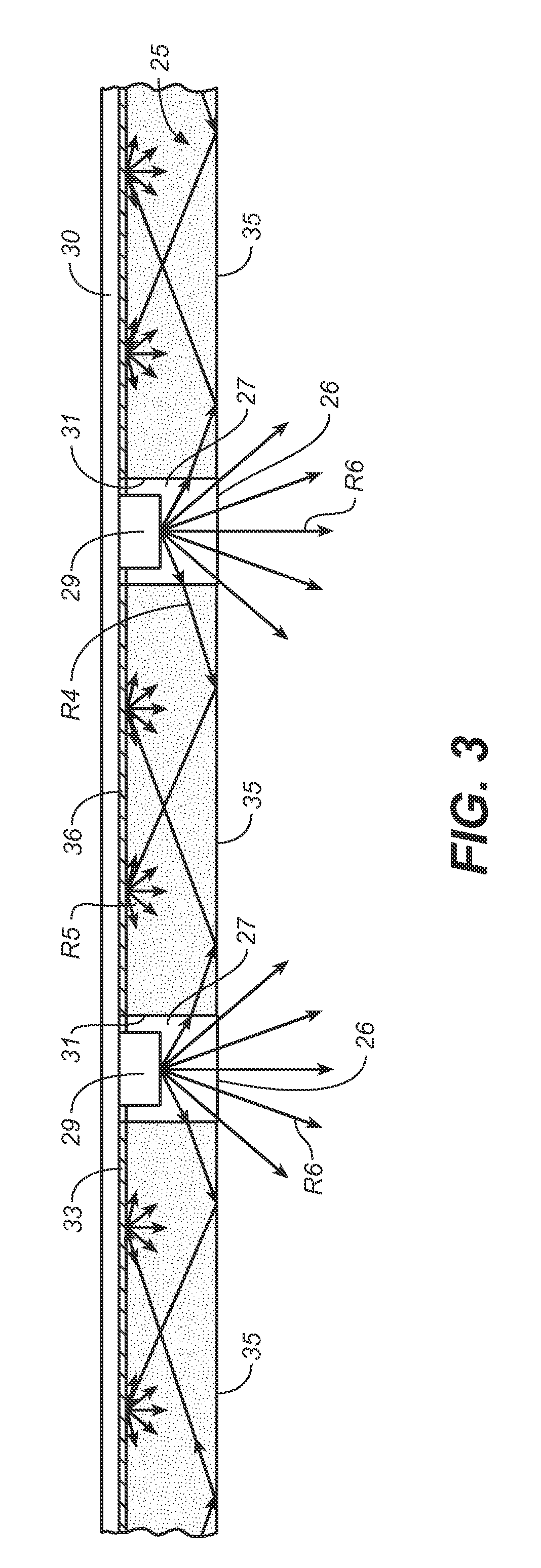Optical system and method for managing brightness contrasts between high brightness light sources and surrounding surfaces
a technology of optical system and brightness contrast, applied in the field of illumination and lighting systems, can solve problems such as visual discomfort, and achieve the effect of reducing brightness contrast and observing brightness contras
- Summary
- Abstract
- Description
- Claims
- Application Information
AI Technical Summary
Benefits of technology
Problems solved by technology
Method used
Image
Examples
Embodiment Construction
[0029]The present invention involves the management of the often extreme brightness contrasts that exist between small high brightness light sources, such as LEDs, and surfaces that surround the light sources. As used herein, the term “high brightness” means ranges of brightness typically produced by LEDs. While LEDs are referred to throughout this description, it shall be understood that the invention is not limited to the use of LEDs, but could employ other small commercially available light sources, such as plasma light sources, that exhibit similar levels of brightness. The management of surround surface brightness is uniquely achieved in the invention using light waveguides.
[0030]FIGS. 1 and 2 generally illustrate the principle of the light waveguide used in the invention. Light waveguides, also sometimes referred to as “light guides” or “light pipes,” are well known. The light waveguide works on the principle of internal reflections governed by Snell's Law, and permits light i...
PUM
 Login to View More
Login to View More Abstract
Description
Claims
Application Information
 Login to View More
Login to View More - R&D
- Intellectual Property
- Life Sciences
- Materials
- Tech Scout
- Unparalleled Data Quality
- Higher Quality Content
- 60% Fewer Hallucinations
Browse by: Latest US Patents, China's latest patents, Technical Efficacy Thesaurus, Application Domain, Technology Topic, Popular Technical Reports.
© 2025 PatSnap. All rights reserved.Legal|Privacy policy|Modern Slavery Act Transparency Statement|Sitemap|About US| Contact US: help@patsnap.com



